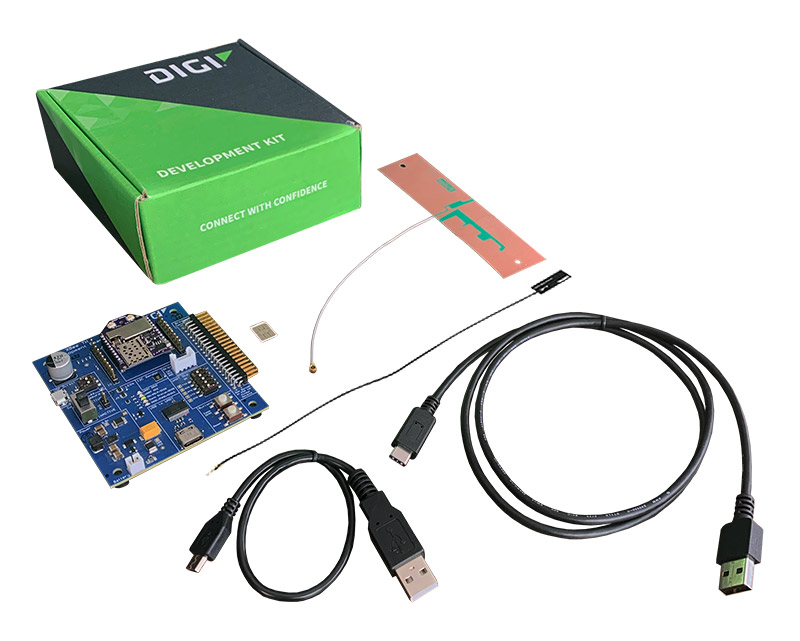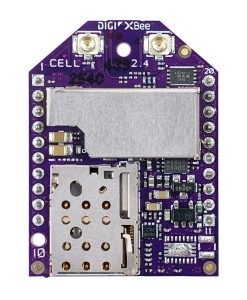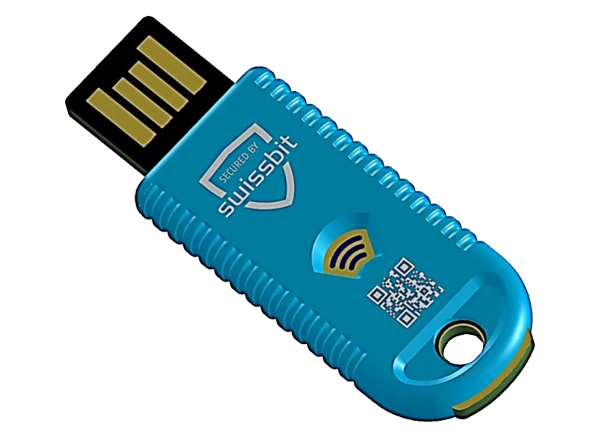
XBee 3 is intended to be a simple and quick way for you to get cellular connectivity into IoT devices at the Edge. According to Digi, it offers the flexibility to switch between multiple frequencies and wireless protocols as needed.
Just to spell it out, NB-IoT stands for NarrowBand-Internet of Things, supporting low power wide area (LPWA) comms (with the underlying technology designed to be much simpler than GSM/GPRS), and LTE-M is Long Term Evolution for Machines, also for LPWA, based on the 3GPP standard. Note, also, I’ll highlight the XBIB-C board, but a variety of sub-options are available.
XBee 3
 As well as the XBee 3 modem itself (LTE-M/NB-IoT), pictured right, the kit contains a Digi XBee 3 XBIB-C development board, a schematic review by Digi WDS, two antennas (cellular or Bluetooth) and power cable. Programming is done via MicroPython.
As well as the XBee 3 modem itself (LTE-M/NB-IoT), pictured right, the kit contains a Digi XBee 3 XBIB-C development board, a schematic review by Digi WDS, two antennas (cellular or Bluetooth) and power cable. Programming is done via MicroPython.
The Bluetooth Low Energy support is for beaconing, connecting to Bluetooth sensors or local configuration using the Digi XBee Mobile app. With its Digi TrustFence, it also supports Secure Boot, Protected Hardware Ports and the use of Authentication. There are SPI, UART and USB interfaces.
Finally, the kit includes three months of free cellular service, but read the associated asterisk (basically, the service will be limited to ~5 MB/month with limited SMS) as its for testing purposes only.
It’s priced at around $153 (see below).
Digi writes:
“Digi XBee 3 modules are the latest addition to the expanding Digi XBee Ecosystem of wireless modules, gateways, software and development tools – all engineered to accelerate development and deployment. Ideal for low-data (typically <5 MB per month and where latency is not critical), low-power, low-cost applications, Digi XBee 3 Cellular LTE-M/NB-IoT modules feature a power saving mode which extends sleep time and battery life.”
“With Digi Remote Manager, Digi XBee 3 modules can be easily configured and controlled from a simple, central platform. Built-in Digi TrustFence security, identity and data privacy features use more than 175 controls to protect against new and evolving cyber threats. Standard Digi XBee API frames and AT commands, MicroPython and Digi XCTU software tools simplify adding functionality, set-up, configuration and testing.”
You can read more on the Digi website.
See also: TT Electronics launches connectivity kit with LTE Cat M1/NB-IoT
[Via Symmetry Electronics]







